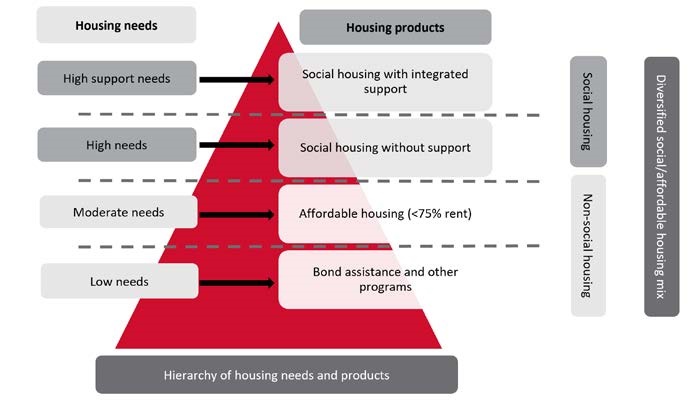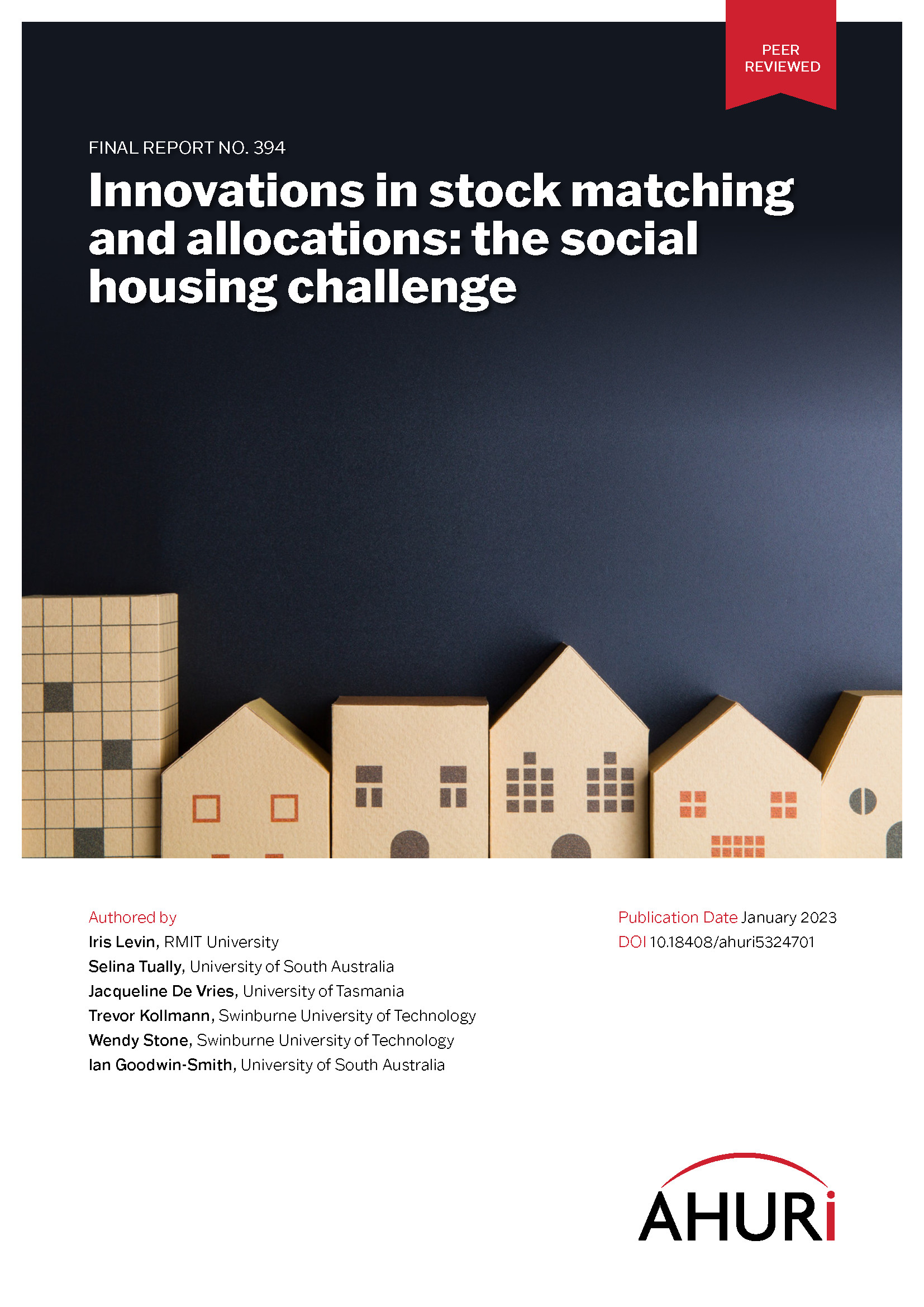
New housing assistance model could better match tenants with both housing and support
09 Feb 2023
With over a hundred and fifty thousand Australian households on waiting lists to get into social housing, finding strategies to make sure the households that most need housing get the dwellings that best match their requirements is of real concern for housing authorities. Sadly, the match is not always quite right, and tenant churn and households with unoccupied bedrooms plague the social housing sector.
New AHURI research, ‘Innovations in stock matching and allocations’, examines whether current allocation and matching policies and practices meet the needs of applicants or tenants and maximise sector performance and efficiency outcomes. It aims to understand the kinds of flexible and innovative allocation and matching policy and practice that are needed to reduce the gap between needs and supply, and enhanced matched outcomes.
One of the main problems is that in Australia there just isn’t enough social housing available to give tenants a large choice in where they live and in the type of housing that is most suitable for them. Nevertheless, all the housing providers interviewed for the research said they had ‘a degree of discretion with their allocations’ and that they try their best to consider their tenants’ needs and best fit for the community. … Applicant ‘fit’ with community and neighbourhood (a ‘quiet’ tenant; an older or younger person) is also considered in the offer of a property to an applicant. … Providers want tenancies to be successful, so not setting a tenancy up to ‘fail’ underlies allocations and, particularly, discretionary allocations.’
Housing providers are also very aware that being able to allocate support for particular groups of clients is vital to prevent people losing their social housing. One state housing officer noted that ‘We’ve got guys living in flats that are never furnished, but they’re living there like they’re homeless. They haven’t been able to … they just haven’t had those [living] skills or support to develop the skill, all that sort of stuff.’
Some groups that were mentioned as moving in and out of the system more than others were tenants requiring specialised support for complex mental health issues, drug and alcohol misuse, and community violence. Women experiencing domestic violence were another group with specialised support needs, particularly around safety and trauma. Young families and single parents were also mentioned as groups that churn in and out of the housing system too often.
Young people aged under 18 were also reported as being a high-churning group as they require specific support to sustain a tenancy.
‘A state housing officer reported to us that ‘they’re young, they’re 16-year-olds, like 15-year-olds, that sort of stuff. They haven’t got the capacity to think beyond tomorrow, let alone next week, or ‘What does a lease really mean?’’, says lead research author, Dr Iris Levin from RMIT University.
The research recognises that housing departments and community housing providers try their best to address the increasing gap between needs and supply and improve allocation and matching outcomes. However it argues that innovative policies and practices can only do so much in the context of a straitened system where there are now well-entrenched gaps between needs and supply of appropriate social housing in Australia.
The research proposes a multi-dimensional model as a way to address the lack of sufficient social housing in Australia. A multi-dimensional model is where housing assistance is not confined only to social housing, but instead is dispersed across social housing, affordable housing and the private rental market.
Figure 1: A diversified housing system catering for diverse housing needs
Such a model could provide a more nuanced social housing response to people’s changing needs. It would support innovative housing offerings, such as people being able to remain in their dwellings, and only change the housing assistance they receive if their situation changes (e.g. moving from fully supported rent to forms of Commonwealth Rent Assistance). It could also support households getting similar levels of housing support if they choose to move to a new location as their needs change (such as having to be nearer to specific medical support or employment opportunities).


